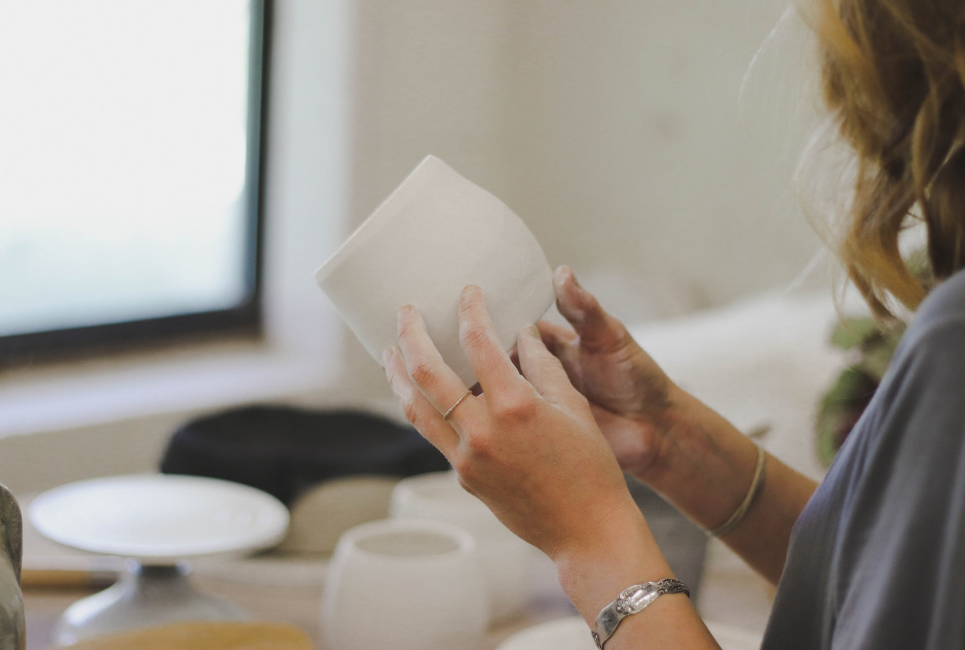- Super Glue vs Epoxy - February 10, 2022
- How to Get Started with Stippling Art - January 18, 2022
- Brother PE770 Review and Guide - January 14, 2022
Are you looking for the right air-dry clay (ADC) for your sculpture? If so, you’re in the right place. Here in this blog post, we’re revealing the best air dry clays on the market and what to look for.
There are lots to cover, so let’s hop to it!
What to Look for When Buying Air-Dry Clay?
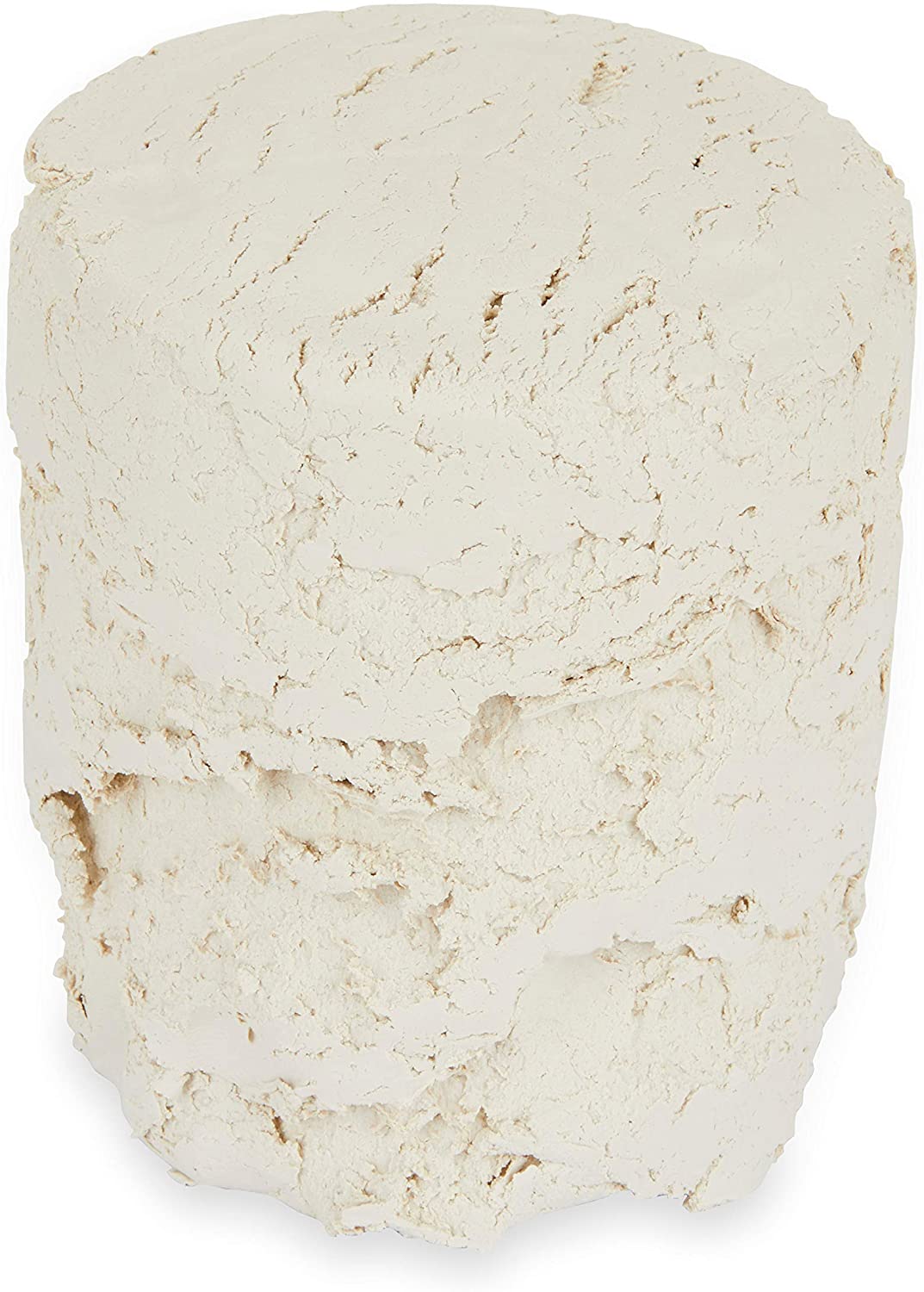
Before parting with your hard-earned cash, there are a few things to consider before deciding on the best air-dry clay for you and your project:
Price
No matter how successful an artist you are, you’ll always want materials that provide the most bang for your buck. ADC is pricey, to say the least! So, to ensure the purchase is worth its while, it’s imperative you choose one that works for you.
Accessibility
Although buying locally may limit your choice, you’ll undoubtedly save on expensive delivery charges. Therefore, in our opinion, there’s no point in setting your heart on a specific clay if it’s not available in your area. Always check the clay’s accessibility first… before getting too carried away.
Strength and Durability
No one wants cracks in their newly finished sculpture. So avoid overly heavy clays. Natural or pottery clays are great for beginners as they’re easy to use and maneuver. However, they become heavy and fragile once dried. As such, there’s somewhat of a trade-off to be had. So, be sure to consider this before making your final purchasing decision.
Clay Texture
Clays vary in their composition, with some being very grainy, while others are incredibly smooth. So, do some research and choose a clay that complements the finished product you’re hoping to achieve.
Pro Tip: If the clay is too soft or smooth, it won’t hold minute details.
Pliability
The pliability of clay varies dramatically. Needless to say, a clay that’s too solid will require a lot of work and effort to shape, which can be very tiring for both you and your fingers!
Adhesiveness and Paintability
Suppose your work comprises individual components that need joining together. In that case, you need to pick a clay that enables you to do exactly that. After all, you don’t want your finished figures to lose limbs or, if you’re creating animals, tails.
Also, if you’re adding color to your work, the clay must be able to absorb it. Otherwise, over time the color will fade. Unlike fired clay, colors won’t adhere to the outside of air-dried clay unless it incorporates it into its self.
Longevity
As artists, we want our work to outlive us. It is, therefore, essential the clay is durable and won’t disintegrate as time goes by.
What are The Top Five Best Air-Dry Clays to Go For?
Now we’ve covered the basics of what to look for in an air-dry clay, let’s dive into the nitty-gritty. Below we’ve listed five of our favorite air-dry clays for you to peruse:
1. Activa La Doll Premier Air-Dry Clay
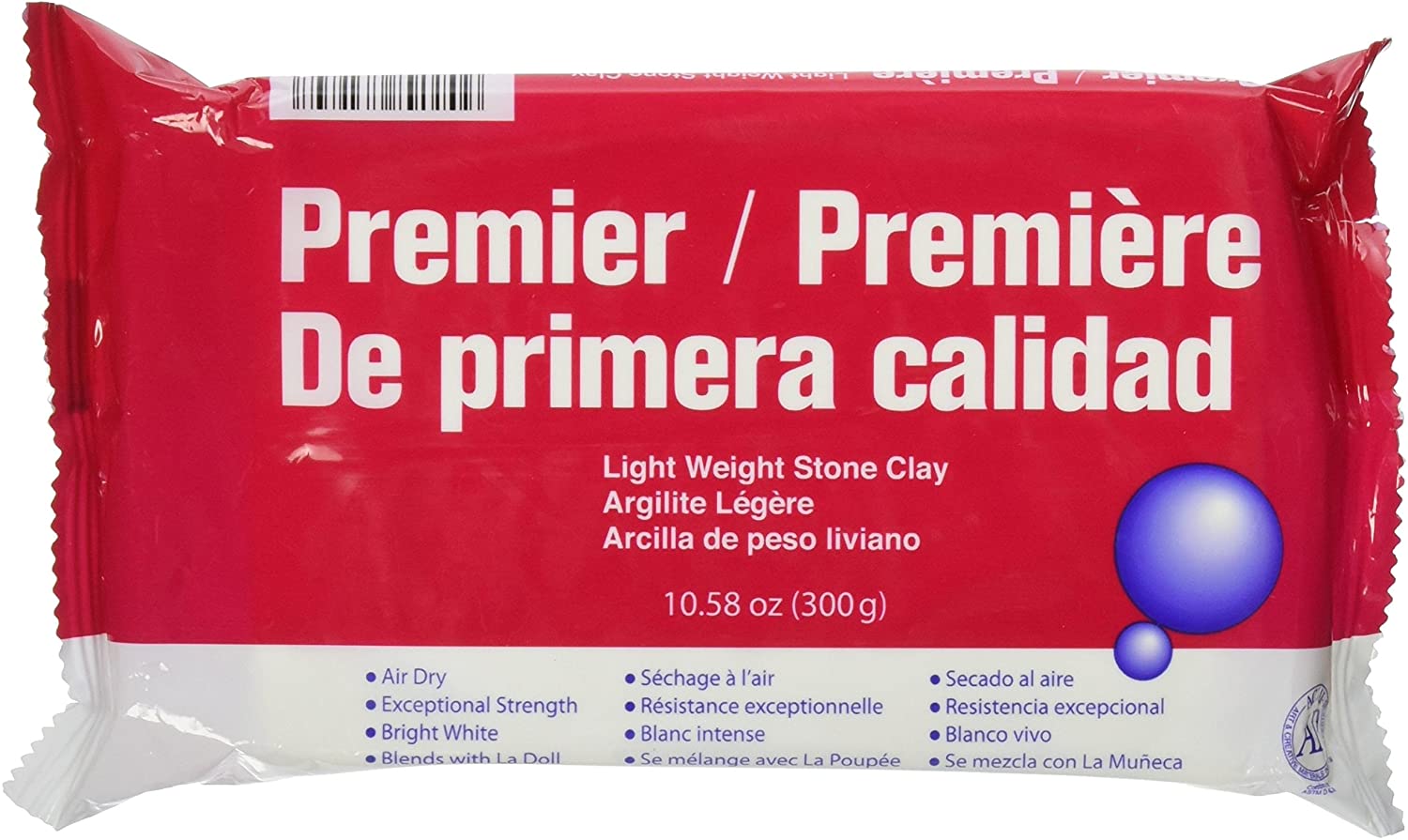
Average Price: $12.50 for 300g.
Activa La Doll Premier air-dry Clay is the priciest option on our list. It’s pretty sticky and easy to get EVERYWHERE. However, it does come with a heap load of benefits!
It’s very lightweight and resilient, meaning that if you’re a butter-fingers (like me!), your sculpture may just survive the fall. The texture is very smooth, yet it holds detail to the most intricate degree.
Also, if you’re looking to paint your sculptures, you’re in luck. Activa couldn’t be easier to paint as its porous surface allows the paint to seep into the clay, leaving behind a smooth-looking finish.
2. Cold Porcelain

The price of cold porcelain varies. You can buy it ready to use, or you can even make it at home! (recipe to follow)
This ADC is very resilient and lightweight, and while there’s a slight chance it will survive piggy in the middle, it’s not advised. It holds detail well, but it proves challenging to mold and sculpt.
Also, despite it being quite a smooth clay, it becomes very tough when it dries, making cold porcelain difficult to sand down. It’s also worth noting; you have to work quite quickly. Although the clay is relatively soft when wet, it’s speedy to dry…and adding water only results in a sticky mess. Needless to say, this makes sculpting it a bit tricky.
While sticky clay is less than ideal for working with, you can take advantage of it by using it as a replacement for glue. Also, painting cold porcelain is doable. That said, it’s worth adding an extra layer of primer to your work before adding any detail.
3. Creative Paperclay
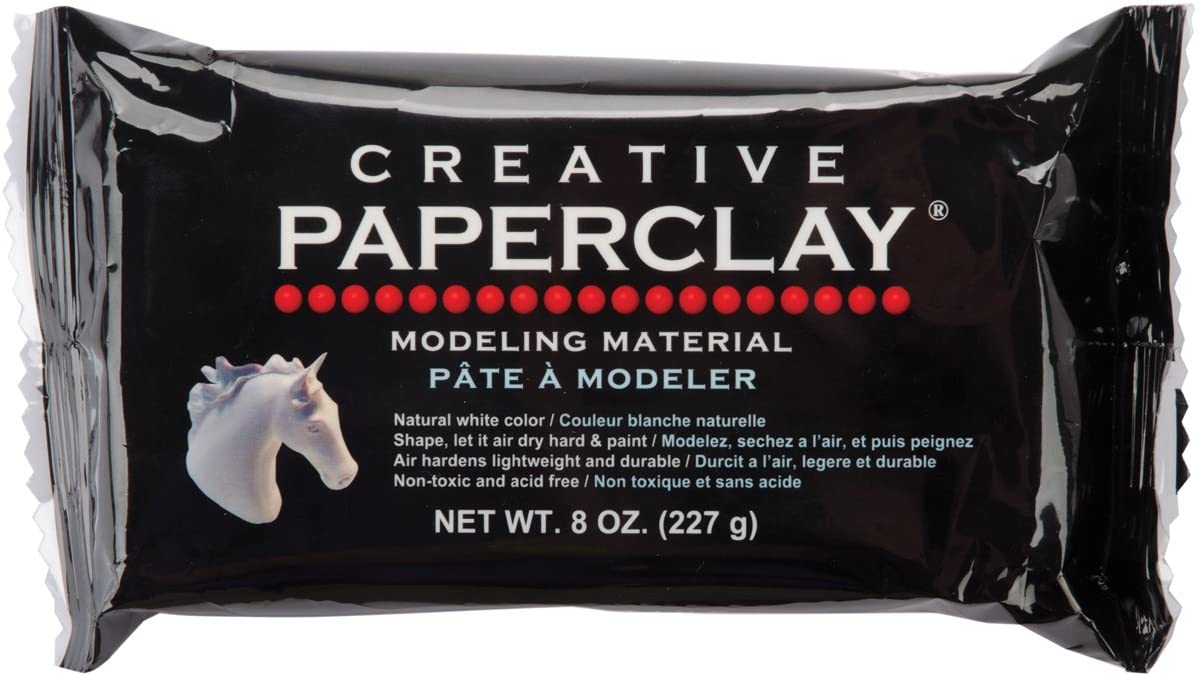
Average Price: $12 for 454g
Creative Paperclay is a very resilient and lightweight clay. It’s excellent for holding detail.
It’s more likely to dent than it is to shatter due to its genetic makeup. Plus, you can use this clay to stick to other components without creating a complete mess!
Creative Paperclay is a fabulous option for beginners as it’s easy to manipulate and soft to the touch, and due to its porous surface, it’s also effortless to paint. So get decorating!
The major downside to this clay is that it’s on the pricier side, and it might be inaccessible depending on where you’re based. Also, the texture is somewhat rough but can easily be sanded down for a smoother finish. If you like sculpting delicate and minute details into your work, then this clay’s softer nature may become challenging. So, be sure to bear these drawbacks in mind before making your purchase.
4. DAS air-hardening Modeling Clay
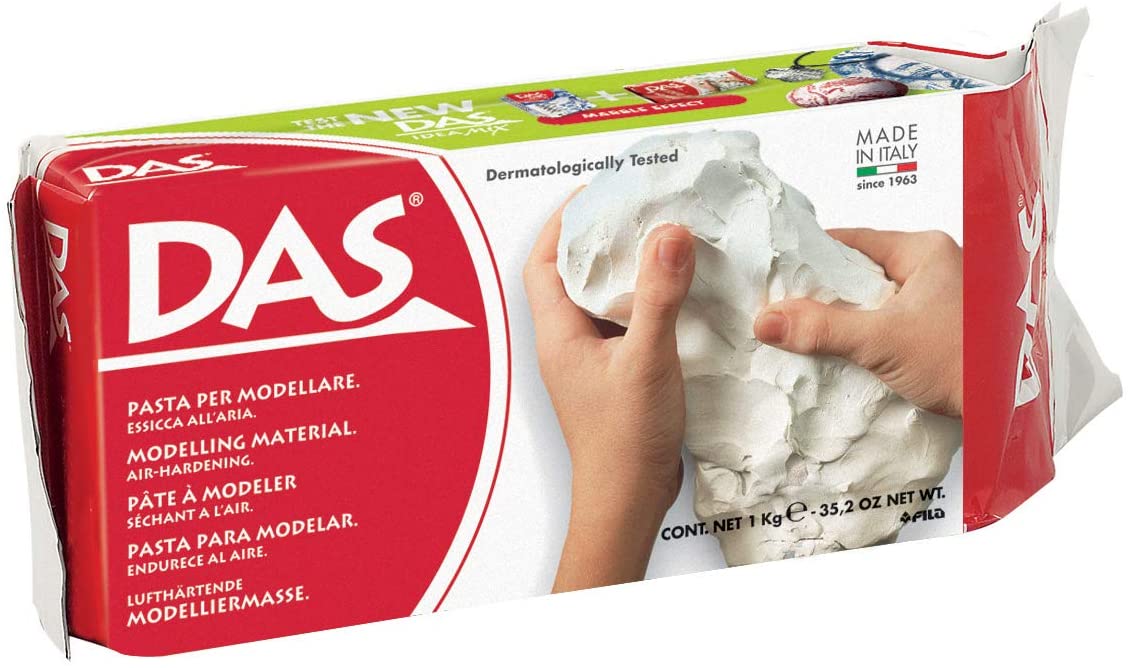
Average Price: $10.49 for 2.2lb!
Now, this is value for money! This clay is very versatile, resilient, and paper-based! However, it takes a while to manipulate. But, just add a little water and some elbow grease, and it soon becomes pliable!
Your sculptures will be sturdy and unlikely to break or crack once dried due to its fibrous composition. However, adding fine details while the clay’s wet isn’t this material’s forte. Instead, you’ll have to wait to attack it with carving tools or a sander once dry. Then the details will be precise and intricate.
Lastly, this clay is also very easy to paint – so get decorating!
5. Jovi Air-Dry Modeling Clay
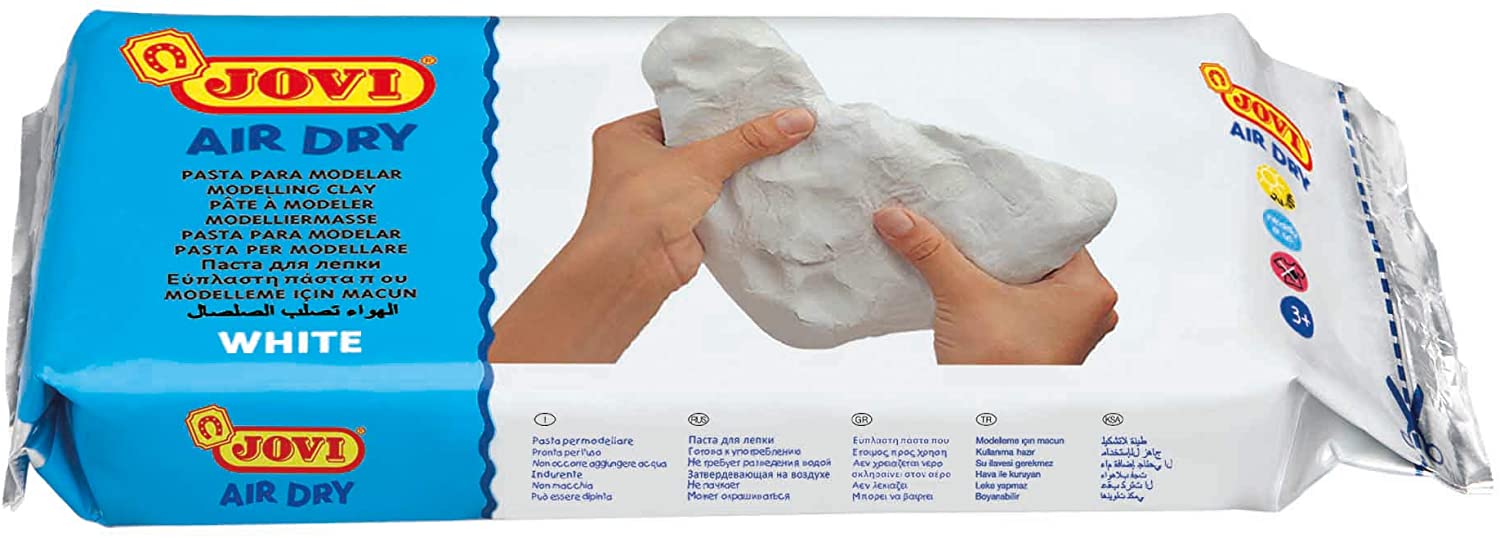
Average Price: $11.95 for 2.2lb
Jovi air-dry modeling clay is another option that won’t break the bank. Its soft and smooth texture makes it super easy to shape. The clay dries slowly (throughout 24 hours), making it easy to adapt and perfect before it hardens.
Any additions can be attached with wet clay. Cracks may form, but they’re easy to remedy with a little water and extra clay. You’ll smooth these out in next-to-no time. This clay is also easy to paint and seal!
All Jovi premium clays are safe, non-toxic, and free from allergens, making them safe for all the family!
And finally… one for the KIDS!
Don’t let the kids miss out on the fun! If you’re looking for the perfect air-dry clay for the little ones, try using Crayola Model Magic. This is the perfect art project for easing lockdown boredom and letting their imagination run wild.
Here’s The Recipe for Cold Porcelain ADC!
If you’re working on a tight budget, you can always make your own air-dry clay…
Using a microwave:
- In a microwave-safe bowl: Mix one cup of cornstarch with one cup of white glue.
- Add two tbsp of baby oil and two tbsp of lemon juice: Mix until smooth.
- Ping in the microwave for 15-second intervals: Mix between each one, and blend any lumps that appear as it cooks. It’s ready when it’s sticky. Always undercook rather than overcook, as the former is easier to salvage.
- Apply lotion to your hands and work surface. This will stop the clay from sticking.
- Knead the mixture until cool. This should take 10-15 mins tops. Continuously knead until the time is up.
- Wrap the clay in Saran Wrap and leave for 24 hours. Ensure your clay is stored in a cool, dry place. Remember to coat the clay in lotion to stop the Saran Wrap from sticking to it. Using a refrigerator is ideal, but any cool place (away from direct sunlight) will do.
- Check for consistency. Remove the porcelain from the Saran Wrap. Try and tear it apart; it should stretch and break in tear-shape forms. If the inside is still sticky, add some more cornstarch and knead well. If it’s brittle and dry, try adding some oil … if this doesn’t work, cook some more and make sure it’s underdone. Your first batch was probably overcooked. After another 24hr cooling period, mix the two batches.
And there you have it, your very own, home-cooked ADC recipe. So what are you waiting for? Get sculpting!
FAQs
Question: What can I make with air dry clay?
Answer: ADC is incredibly versatile. It’s great for almost any sculpting project. It can also be used to mend other pottery items, namely by plastering over cracks. Once you paint over it, you’ll hardly notice the difference!
Please note: ADC is not food safe.
Question: How fast does the clay dry out?
Answer: It varies from clay to clay. However, it roughly takes 24hrs to set completely.
Question: Can I work on my sculpture in phases?
Answer: Yes, you can! Ensure you spray with water regularly and cover it in an airtight material such as Selan wrap to prevent it from drying out.
Question: Do I need any tools or equipment?
Answer: No, this is the wonderful thing about ADC! You can just use your hands, or if you have the budget and the inclination, proper clay tools. You can also use natural elements such as leaves or sticks, to create more whimsical patterns and imprints!
Question: Can air-dry clay be used for model-making?
Answer: Yes, it can! For small figurines, it’s advised to create a wired infrastructure for the clay to adhere to.
Question: How can I make my air-dry clay waterproof?
Answer: If you’re making a sculpture for the garden, you’ll need to seal it to protect it from the elements.
• Coat your work in acrylic gloss medium
• Coat your creation using a mixture of equal parts, PVA, and water.ere are two options for you:
After coating your work in one of the above, give it two coats of grey acrylic and two coats of your final colors/details. This will ensure it’s both air and watertight.
Question: How to create a soft look?
Answer: Do you want a softer look than a palette knife can give you? If so, use a sponge to hide any impurities on the surface of your clay.
Are You Ready to Start Using Air-Dry Clay?
We hope that having read this review, you now have a better idea of the best air-dry clay for your needs and budget. Whichever one you opt for, let us know how you get on in the comments box below. We’d love to hear from you!
Read more crafting related guides to find more inspiration:

